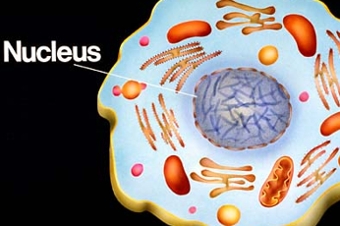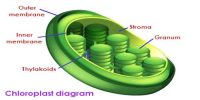Denser and clearer organ found in the protoplasm is Nucleus. Robert Brown discovered and named nucleus in 1831 AD in the cell of orchid leaf. Normally each cell contains one nucleus. Some eukaryotic cell like sieve tube, mature red blood cells of mammal do not have nucleus. Usually nucleus is spherical and present at the centre of the cell.
The cell nucleus is a membrane-bound structure that surrounds the cell’s inborn information and controls the cell’s growth and reproduction. The cell nucleus is bound by a dual membrane called the nuclear envelope. This membrane divides the contents of the nucleus from the cytoplasm. They may be present by the side of a large vacuole. The nucleus may smaller or larger in size and shape.

Function: Nucleus controls the total activity of the cell.
Structure: Chemically they are made of nucleic acid and protein. It contains some protein, trace of DNA (Deoxi-ribo nucleic acid) and RNA (Ribo Nucleic Acid), little amount of Co-enzyme and other materials. Physically they are made by the following parts: – Nuclear membrane, Nucleoplasm, Nucleolus and Chromosome.













